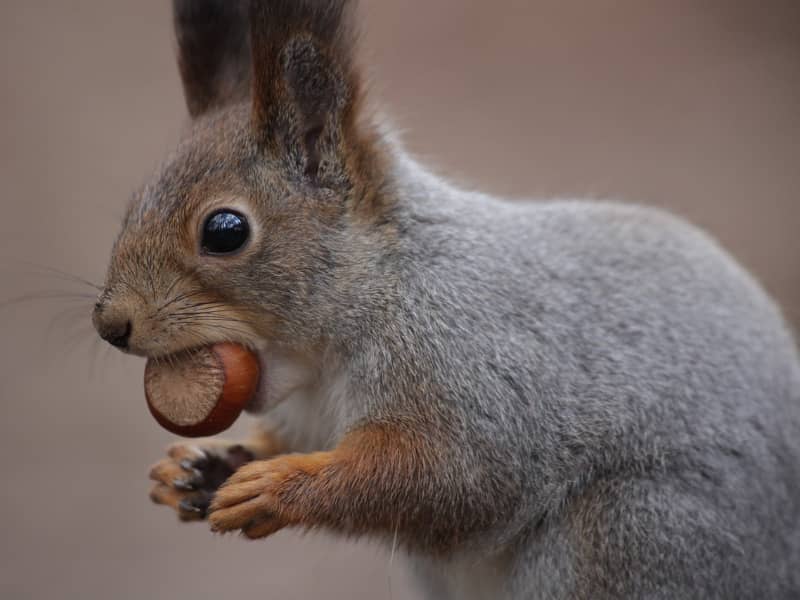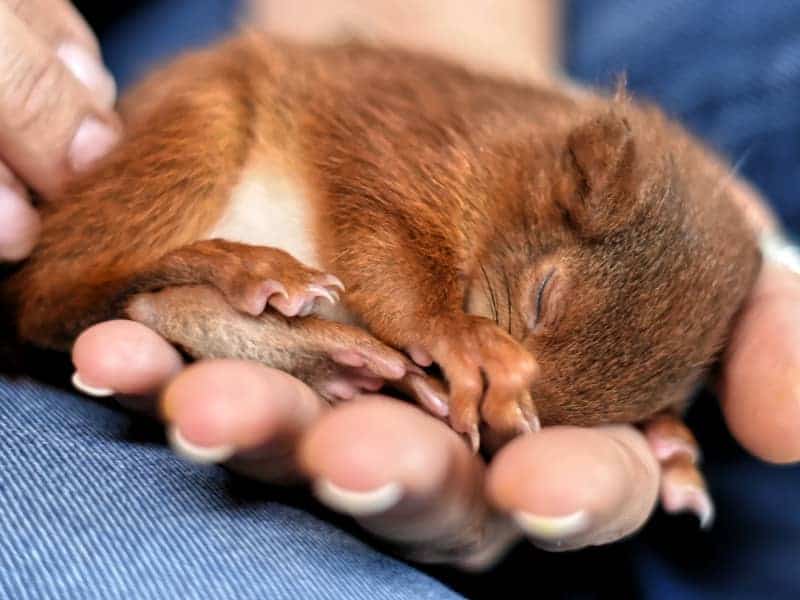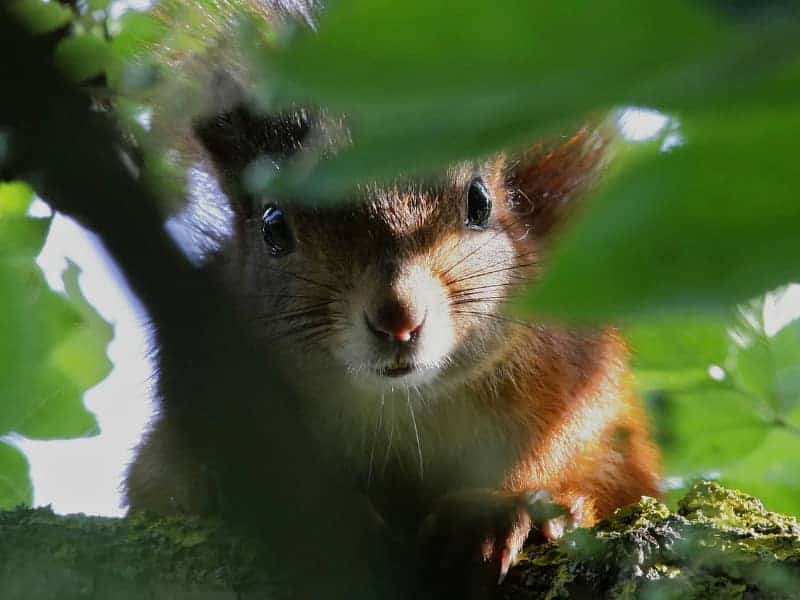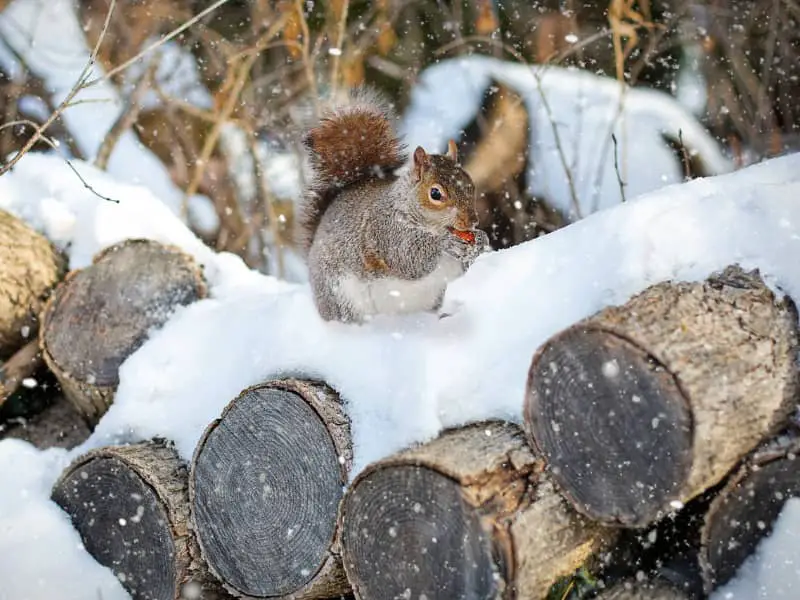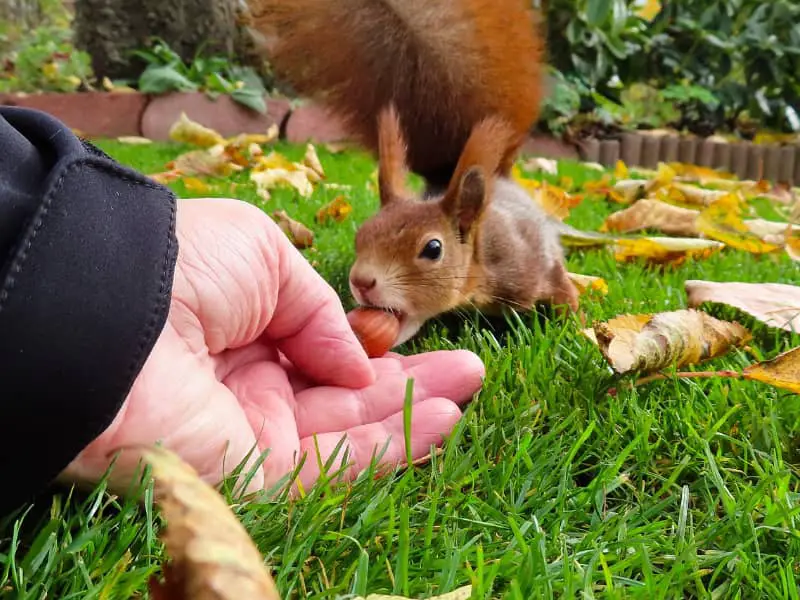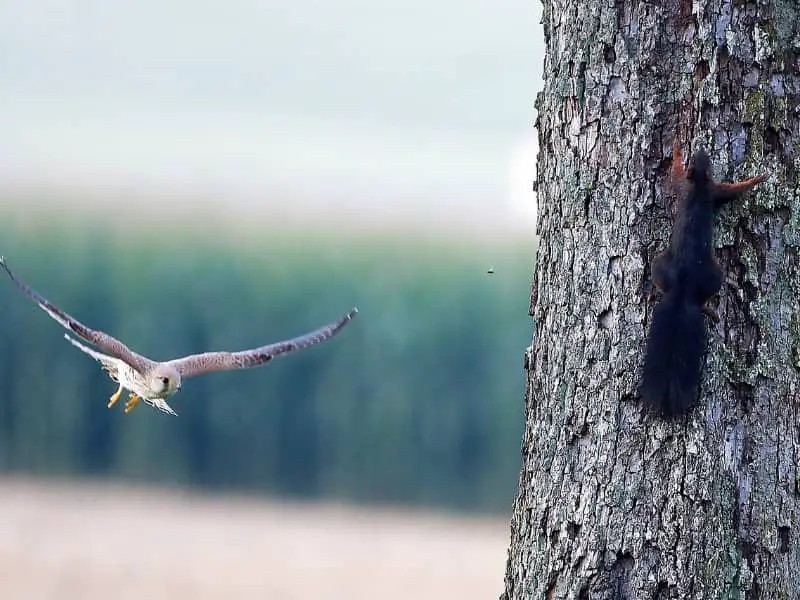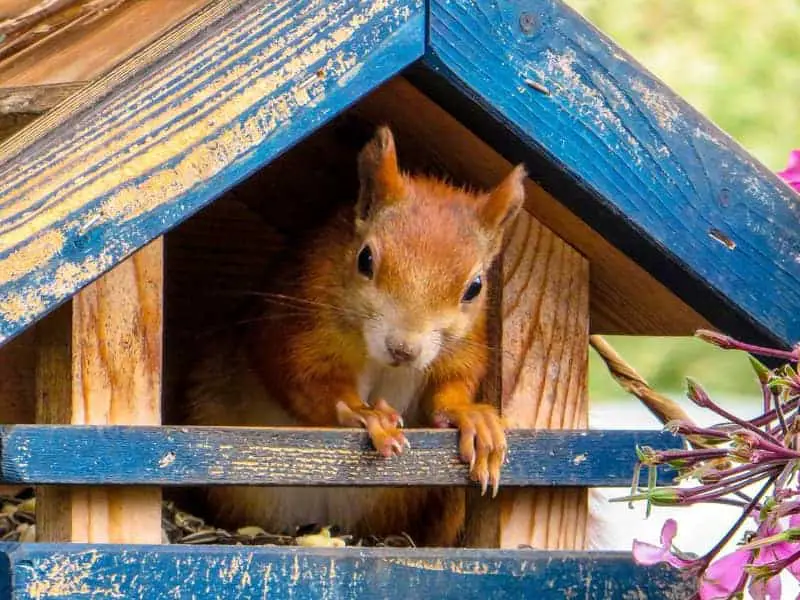
Are squirrels solitary animals?
By and large, squirrels are solitary animals. Only during the mating season they are together with a partner. You will therefore see the squirrel mostly alone and only very rarely together with conspecifics. However, it is not impossible that you will see a very sociable animal with other squirrels.
Squirrel solitary - not in extreme cold weather
Even though the squirrel is known to be a solitary animal, there are situations, other than mating, where you will see several at the same time. Apart from the mother squirrel with her young, you will also see squirrels together when it is very cold. They then cuddle close together in the gully to keep each other warm.
How to attract squirrels to the garden
Even though squirrels are basically solitary animals, you have a number of ways to attract the animal to your garden. If the animals do not find enough seeds and nuts, they are very accessible to food gifts by humans. This is especially true in cities and densely built-up residential areas. Natural food resources are becoming less and less. This forces the squirrels to find other sources of food.
At this point, you come into focus as a food dispenser. If you are in a special Squirrel feeder regularly deposit food, the loner squirrel will soon be more common in your garden.
The omnivore
Squirrels are omnivores in nature. This makes feeding them easy for you. You can put a variety of nuts and seeds in the feeder. In addition, you can also attract the squirrel loner with raisins, grapes, apple pieces, corn or unsweetened rusks. However, you should not give the rodents food scraps, almonds or peanuts.
Squirrels solitary or live in the group
A feeding house provided by you is quickly discovered by several own squirrels. So it happens that the squirrel loner joins a group and shares the food with the conspecifics.
During the mating season from late January through late summer, you will most often find squirrel pairs sharing a hutch. After the young are born, except for the young, the mother becomes a lone squirrel again. She is solely responsible for raising the young. Meanwhile, the male animal is already looking for a new partner.
The young remain alone in the nest with the mother for about 4 months. After that, they stay near the mother and the goblin for a certain time before they increase their radius of action. This can be up to 50 hectares per animal.
Diurnal loner
The squirrel is a diurnal loner. Its physique is perfectly adapted to the climbing way of life in trees. On average, an adult animal weighs between 200 and 400 g with a size of about 20 to 25 cm. In addition, there is the bushy tail, which can easily reach a length of 15 to 20 cm. With the tail, the small rodents can balance well and also use it as a rudder.
The relatively large feet are perfectly adapted to life in the trees. Thus, they achieve a very good jumping power. Incidentally, the feet have another distinctive feature. The animals can turn their feet 180 degrees backwards. Thus, they are able to climb safely head down. In case of a fall, they land on all four palms or feet.
Natural enemies of the loner
The diurnal animals are reasonably safe during the day. Danger threatens them more at night, when they sleep in their hawks. The rodents have to be particularly wary of hawks, buzzards and crows. The pine marten, lynxes and weasels also love the delicacy of squirrels. These are all reasons why squirrels have a very good sense of smell, as well as good hearing and a watchful eye.
Author

-
Garden animal - A life with nature
Welcome to my animal blog! My name is Dirk and I am happy to take you on my journey through the fascinating world of animals and gardening.
Born 54 years ago, I have had an insatiable curiosity for the animal world around me since childhood. Although I have moved professionally in other industries, my true passion has always been animals and nature. It is remarkable how a small garden has become such an important part of my life.
Many of my fondest memories are associated with the animals that share our home. Whether it's the curious squirrels that scurry across the trees in the morning, the colorful variety of birds that visit our feeders, or the busy bees and butterflies that pollinate our flowers, every moment with them is invaluable to me.
This blog is my contribution to share my experiences, discoveries and insights with like-minded people. Here I will share stories of unforgettable encounters with animals, give tips on gardening and creating wildlife-friendly habitats, and take you on my journeys through nature.
Thank you so much for being here!
Cordial,
Dirk aka garden animal
Last posts
- 27. February 2024PetsVeganes Hundefutter – Grün und Gesund?
- 18. January 2024ChickensOregano für Hühner
- November 27, 2023HamsterDiurnal hamsters
- November 24, 2023HamsterHamster hammock

